Home Tags Posts tagged with "chinese economy"
chinese economy
Investors might find it somewhat difficult to decide on where to put their money this year because the headlines coming from investment circles are mostly depressing. The weakness in Chinese economy is weighing down much of Asia and American manufacturers are starting to feel the pinch. Geopolitical tensions in the Middle East remain unresolved and oil prices are in troubled waters. Economic data in the U.S. is mixed and the fact that 2016 is an election year doesn’t provide much of an economic direction.

It is already obvious that 2016 will be very volatile year in the global economic scene. The move by the U.S. Federal Reserve to raise interest rates at the end of 2015 was the harbinger of things to come. Economic events in the first three weeks of 2016 has shown that 2016 will be characterized by a rollercoaster of exciting highs and depressing lows in the global economy. This piece seeks to explore the outlook in stocks, precious metals, and global oil prices so that investors might pitch their tents on the winning side.
Stocks are swimming in wild swings
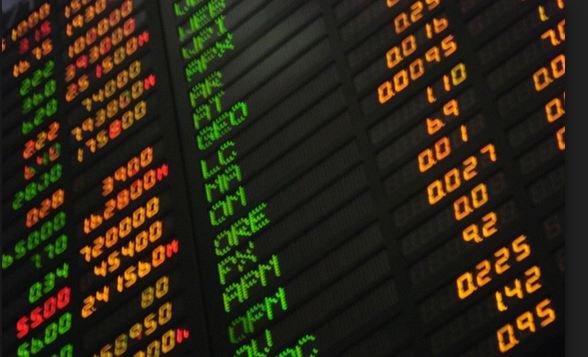
If you have investments in the equities market, you’ll have already seen the handwriting on the wall that stocks will be volatile this year. On Wednesday, all the major U.S. market indices were down. For instance, the S&P 500 was down by a significant 1.56%, the Dow Jones Industrial Average was down 1.17%, and the NASDAQ Composite was down 0.12%. More so, all the major market sectors (except healthcare) were down in yesterday’s session, with the energy sector taking the biggest hit with a 3.14% decline.
The global equities scene was also not impressive. In Asia, stocks are suffering in China as the Shanghai index dropped 3.23%. The situation was not different in Japan as Nikkei 225 had a 2.43% decline while Hong Kong’s Hang Seng Index was down 1.82%. The situation also appears to be worse in Europe as Euro STOXX 50 was down 0.19% and France’s CAC 40 was down 0.16%.
It is well known saying in the equities market that as “January goes, goes the year”; hence, stock investors will not be surprised if they make massive gains in a session and then lose everything in the next session.
The outlook for oil is uncertain
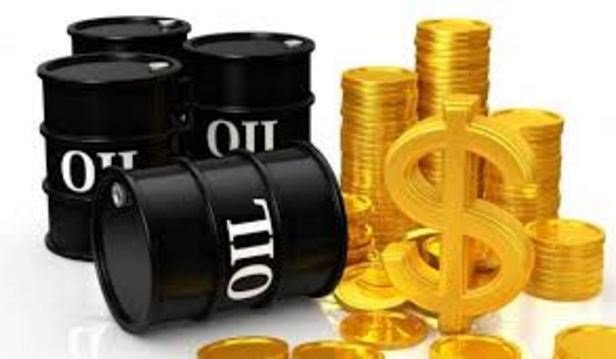
Crude oil has been facing significant headwinds since last year and it seems that the situation has taken a turn for the worse this year. Oil futures have dropped to the lowest price since September 2003 this week, as a glut in the supply of oil and drop in demand (especially from China) has caused the price to fall lower. On Thursday, Benchmark Brent was down 3.2%o $27.10 per barrel. The West Texas Intermediate (WTI) crude futures were down an incredulous 6.7% to $26.55 per barrel. The decline marks the largest monthly fall since May 2003.
Hans van Cleef, senior energy economist at ABN Amro in Amsterdam notes that “There are worries surrounding demand and oversupply“. Dominick Chirichella, oil analyst at the New York-based Energy Management Institute also notes that “no matter how one looks at the fundamental data every angle points toward lower prices as supply is continuing to outstrip demand.”
However, the uncertainties in oil prices provide smart traders with an opportunity to benefit from trading oil futures. If you know how to trade oil, you’ll find the current weakness in oil prices as a good opportunity to make consistent gains from the economic dynamics of oil. It is obvious that oil prices are searching for a bottom and you can make gains when you sell. When the geopolitical tensions in the Middle East are resolved, you can expect oil prices to recover and then you’ll buy oil futures.
The safe-haven status of gold might be back
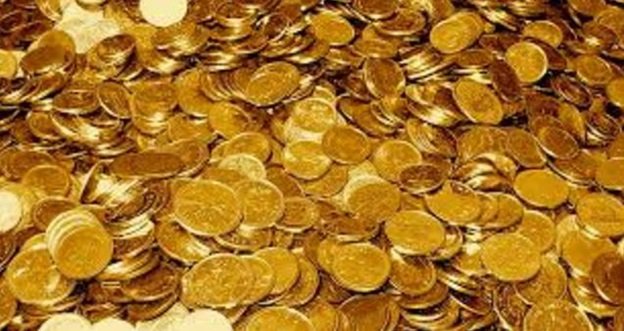
The weakness in the global equities market as discussed earlier is already causing investors to think twice about investing in stocks and they are running into the inherent stability of gold. Gold is considered a safe-haven asset because it tends to keep its value over time, because it is a good hedge against inflation and because it tends to outperform fiat currencies.
The reigniting of the safe haven status of gold suggests that 2016 might be the year of precious metal investors. A Bloomberg data analysis shows that in the five days to January 14, investors have bought 26.8 metric tons of gold through ETFs that are physically backed by the bullion. Gold prices per ounce have climbed more than 4% since the market opened this year in sharp contrast to the decline in equities.
Citigroup analysts in their 2016 commodities outlook note, “gold’s safe haven rationale is back in vogue“. They also mentioned that “geopolitical issues typically tend to be short-lived in terms of lending support to gold prices; we expect ongoing global macro concerns to lend support this quarter, aided by a modestly more benign U.S. dollar outlook.”
IMF has cuts its economic growth forecast for China, with weakness in the global economy set to hit exports.
The International Monetary Fund it now expected the world’s second largest economy to grow by “around 7.75%” this year, and at about the same pace in 2014.
That is lower than the 8% forecast for 2013 the IMF made in its World Economic Outlook, published last month.
The IMF also called for a “decisive impetus to reforms” in the country.
Last year, China’s economy grew by 7.8%, its slowest rate for 13 years. In the first three months of this year, it expanded at a lower-than-expected annual pace of 7.7%.
Last week, the release of disappointing Chinese manufacturing figures was one of the factors behind a global sell-off in shares. A survey indicated that factory activity had contracted for the first time in seven months in May.
Speaking to reporters in Beijing, IMF first deputy managing director David Lipton said: “The Chinese economy is expected to grow at around 7.75% this year and at about the same pace next year.
“Chinese export growth has been, after years and years of very rapid growth, very slow because of the state of the global economy and we now are taking our projections of the global economy into effect.”
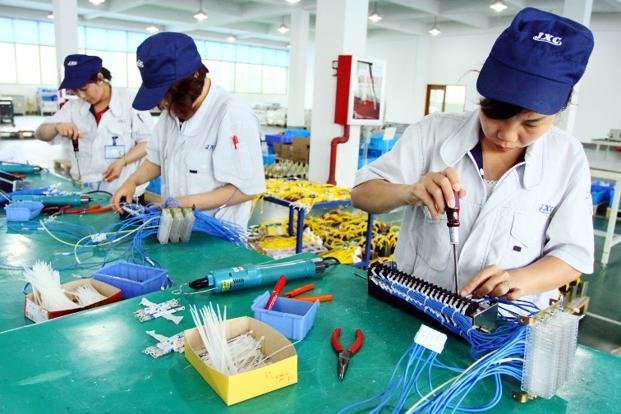
IMF has cuts its economic growth forecast for China, with weakness in the global economy set to hit exports
Among the measures called for by the IMF are slower growth in social financing and a relaxation of controls on interest rates and the exchange rate.
Despite the cut in the IMF’s forecast, David Lipton noted: “Let’s not lose sight of the fact that China is still growing at a very fast rate.
“We’re projecting that growth will remain robust.”
David Lipton added that growth “should pick up moderately in the course of the second half of this year, as the recent credit expansion gains traction and in line with a mild pick-up in the global economy”.
[youtube meNac-FUboM]
The Chinese economy, world’s second-largest, has slowed and performed worse than many analysts expected in the first quarter of 2013.
Annual growth was 7.7% in Q1 2013, compared with 7.9% in Q4 2012. Analysts had forecast a figure closer to 8%.
China wants to spur growth after it hit a 13-year low in 2012.
Other key data on Monday also came in lower than market expectations, raising questions over the outlook for growth.
Industrial output rose 8.9% in March from a year earlier, much lower than analysts’ targets of 10%.
Meanwhile, fixed asset investment, a key driver of China’s growth, rose at an annual rate 20.9% in the first three months of year. Analysts had expected growth of more than 21%.
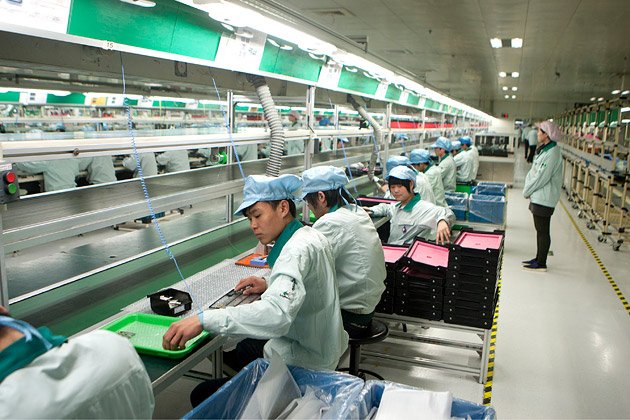
The Chinese economy, world’s second-largest, has slowed and performed worse than many analysts expected in the first quarter of 2013
“The Chinese economy is showing soft growth momentum in the first quarter,” said Wei Yao of Societe Generale.
“All these figures showed that the economy is in a weak recovery.”
Over the past few years, China has relied heavily on its exports and investment spending to maintain a strong pace of growth.
However, as economic growth in its key markets such as the US and Europe has slowed, and its exports have weakened, there have been calls for China to rebalance its economy.
Beijing has acknowledged this and has indicated that it wants to increase domestic demand to reduce its dependence on exports and achieve more sustainable growth.
At the same time, China has had to deal with a widening wealth gap, which has prompted fears of social unrest in the country.
There have been calls for the new leadership, which took charge in March, to work towards a more inclusive growth model.
Analysts said a slower rate of growth may actually help China, as it tries to achieve those goals.
“Given Beijing’s goal of restructuring the economy, a relatively moderate economic growth is not a bad thing in the longer term,” said Wei Yao of Societe Generale.
She added that this “could help policymakers focus more on the quality rather than speed of the economy”.
China has taken various steps over the past few months to spur growth.
China’s central bank has cut interest rates twice since June to reduce borrowing costs for businesses and consumers and increase lending.
Beijing has also approved infrastructure projects worth more than $150 billion.
Analysts said China was likely to continue to use easy monetary policies as a tool to sustain growth, and would not raise rates or look to limit access to capital.
“Certainly with this number, policy certainly would not tighten and would continue to be quite accommodative,” said Tao Wang, an economist with UBS.
However, some analysts warned against any further aggressive easing measures, adding that such measures may promote asset bubbles and overheat the economy.
“Another year of propped-up growth via state spending and a credit deluge would, we fear, push China dangerously close to proving Wen Jiabao correct – that the current economic model is <<unsustainable>>,” said Alistair Thronton, senior China economist at IHS Global Insight.
“If something is unsustainable, at some point, it won’t be sustained.”
[youtube gwVf-rtcZEc]
Chinese economy, the world’s second largest, is showing signs of a rebound that could help it emerge from its worst economic period in 13 years.
According to the latest Chinese government figures, growth picked up to 7.9% in the final three months of 2012, from 7.4% in the previous quarter.
This was driven by state investment in infrastructure projects and efforts to get consumers and companies to spend.
Economic stability is seen as vital for China as its new leaders take over.
“It is obvious that the slowdown in the Chinese economy has halted for the moment,” said Fraser Howie, an economist and co-author of Red Capitalism.
“But one has to be mindful that any recovery will be limited in its scope, not least because of the various headwinds that China is facing,” he added.
“The new leaders, who take charge in March, will now have to find the right balance between trying to prevent the formation of a property bubble and keeping a healthy growth rate going.”
That may prove tricky, not least because China’s economic growth has slowed significantly from the highs of previous years, and analysts warn that state stimulus measures may wane.

Chinese economy, the world’s second largest, is showing signs of a rebound that could help it emerge from its worst economic period in 13 years
On Friday, the statistical office reported that gross domestic product, the main measure of growth, increased by 7.8% in 2012, down from 9.3% in 2011.
That was the slowest annual rate of growth since 1999.
But it is still way above the anemic growth rates experienced by most other major economies last year. Figures for the US, the world’s largest economy, and Japan, the third largest, are expected to show growth of about 2%.
The 17 members of the eurozone are collectively expected to contract by about 0.4%.
These factors brought down the pace of growth late last year to uncomfortable levels, with some economists predicting a “hard landing”, or a sharp slowdown.
However, their pessimistic predictions of a slump to growth of 6% seem to have been too extreme.
Instead the government implemented infrastructure spending programmes to spur growth and also provided incentives to encourage consumer spending and corporate borrowing.
“The government’s stimulus measures implemented last year have managed to stabilize growth and lay the foundations for solid expansion this year,” said Dariusz Kowalczyk of Credit Agricole CIB.
The figures released on Friday were “the best we could have wished for”, he added.
Underlining this optimism were other figures also released on Friday which showed an improvement in house prices and retail sales.
Asian stock markets ticked higher on the news, while the Australian dollar gained. Australia is a key exporter to China, selling minerals that are used to help power its economic expansion.
Hong Kong’s Hang Seng stock index was trading 0.7% higher, South Korea’s Kospi added 0.5% and Australia’s main stock index gained 0.3%.
Japan’s Nikkei 225 was the biggest gainer, adding 2.1% and getting an extra lift as a drop in the value of the yen helped exporters.
[youtube M_I7DZrJ_bo]
Chinese economy has slowed for a seventh quarter as problems in Europe and the US hurt demand for its goods.
The annual rate of growth was 7.4% in the third quarter, down from 7.6% in the previous three months.
However, there were signs that the world’s second-biggest economy was now stabilizing and rebounding.
That would be good news for China, which is facing a leadership change, and the rest of the world, which has benefited from its recent boom.
“Clearly, concerns over continued slowdown can now be put to rest,” said Dariusz Kowalczyk, senior economist as Credit Agricole-CIB.
“The last month of the quarter brought acceleration of industrial output, retail sales and fixed asset investment in year-on-year terms, highlighting the fact that improvement of momentum of the economy was particularly strong in September.”
In Hong Kong, the main Hang Seng stock index rose 0.7% on the news, while in Shanghai, shares climbed by 1.2%.
China’s growth over the past few years has been led by the success of its export and manufacturing sector, as well as by a credit-fuelled investment boom directed by the government.
But a number of issues have recently hurt demand for China’s exports, not least the debt crisis in the eurozone and a sluggish rebound in the US.
This had increased worries that China’s economic growth would slow further in coming months, and may even dip below the 7% mark, leading to a longer economic slump both inside and outside of the country.
That is something that China was keen to avoid as it prepares for a once-in-a-decade leadership change. China’s ruling communist party is about to unveil its next generation of leaders in November.
The fears had been that a sharp slowdown in the economy may result in business cutting jobs, leading to higher unemployment.
There had also been concerns that a significant slowdown may prompt a big drop in property prices – eroding the value of assets of many people.
However, on Thursday, China also released other key economic indicators alongside its gross domestic product (GDP) data, and these indicated that things may be starting to pick up again.
China’s industrial production rose by a more-than-expected 9.2% in September from a year earlier. That was up from 8.9% growth in August.
Retail sales, meanwhile, during the same month were 14.2% higher than a year earlier, signalling that domestic consumption was growing.
“The September data indicates economic momentum has picked up strongly compared with July and August,” said Zhang Zhiwei, chief China economist at Nomura in Hong Kong.
The latest numbers added to the optimism that followed trade figures which were released over the weekend. They showed a 9.9% year-on-year growth in exports during September, a big jump from the 2.7% growth recorded in the previous month.
Zhang Zhiwei added the latest data “helps reinforce our view that growth will rebound visibly in the fourth quarter”.
China has announced various stimulus measures in recent months aimed at boosting domestic consumption and sustaining growth.
The central bank has lowered the amount of money that banks need to keep in reserve three times in the past few months in order to increase bank lending.
It has cut interest rates twice since June to reduce the burden on businesses and other borrowers.
Beijing has also approved infrastructure projects worth more than $150 billion, aimed at spurring a fresh wave of economic development.
There had been hopes that China’s policymakers may take further measures to spur growth. But with September’s positive set of economic data analysts say they may now see Beijing delay a major move.
“There is no room, or need, for any further major stimulus, especially a rate cut,” said Dariusz Kowalczyk of Credit Agricole-CIB.
Even so, other analysts reckon that any rebound is in its early stages and if anything, it needs a further boost to take hold and continue.
The worry is that should China stop helping consumers and businesses, then growth could stagnate or start to retreat again.







